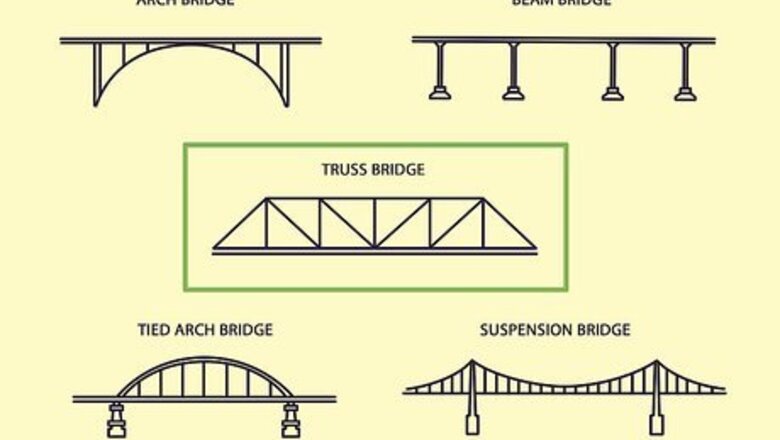
views
Designing the Bridge
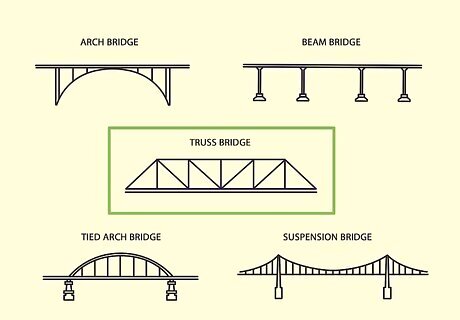
Decide on what type of bridge you want to build. Follow a common bridge design style, like a beam or truss design—or come up with your own. A truss bridge uses horizontal and diagonal pieces to create sturdy structures for each side of the bridge. This is the most common and popular style of model bridge to build. A beam bridge is a simple structure that uses a horizontal beam placed across an empty space, sometimes with supporting “legs” underneath it. You might choose a design based on what you’ll use the bridge for. Does it need to hold weight? Does it need to span a certain length of space in a model display or other project? Note that wooden skewers are better suited to a design with straight lines rather than an arch design.
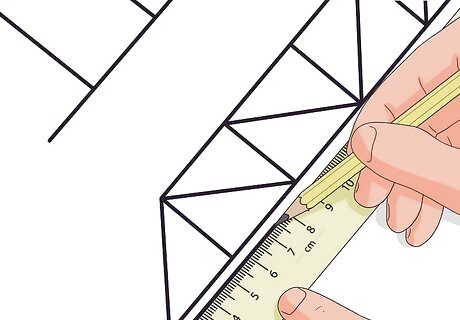
Sketch out your design on paper. Use a pencil and paper to sketch out the design of your bridge, which will help you determine the scope of the project and how many skewers you will need. Or, design your bridge using a computer program or mobile app. You may also find ready-made designs or templates for a model bridge online or in a simple engineering book. Use graph paper to assist you in making easy measurements and drawing straight lines. If you don’t have graph paper, use a ruler to help create the lines. Draw your bridge design to scale (meaning with the same lengths you will use for the actual skewers) so that you can easily lay your skewers across your design to prepare for assembly later. If using digital software, print out your design to do this if possible. Try drawing or virtually designing your bridge design from a couple different angles to help you visualize each part of it. You can create a side view as well as an end view of the bridge.
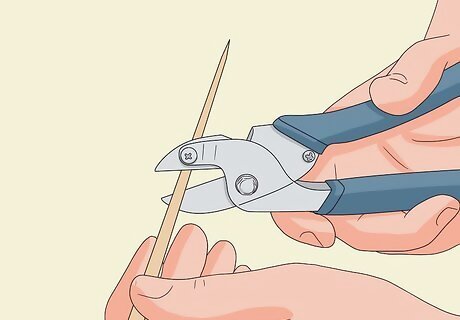
Layout your skewers and cut them to size. Place your wooden skewers out on top of your sketch to find the lengths you’ll need. Cut any of the skewers down to size using craft shears or a craft knife. Note that you may have to use several skewers attached together for longer sections, or to add strength to any given piece. Plan to have a large quantity of skewers to be prepared. If you don’t have access to craft shears or another tool that is sharp and durable enough to safely cut through the wooden skewers, you can use a pair of regular scissors to score a skewer where you want to cut it and then break it by hand along the score. Be careful of the sharp ends of skewers, especially if they fly out when cut. Avert your eyes away from the skewers when cutting, or wear safety goggles. You will need enough material that can get the bridge from one site to another but you don't want to make it too long without support. Otherwise, the material will fall.
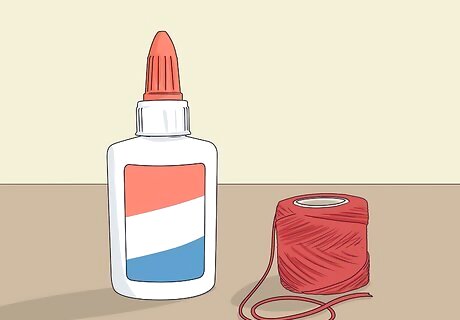
Choose glue or string for assembly. Decide if you’d like to use wood glue or string to connect the skewers for your bridge design. If you use glue, make sure it is wood glue that will dry clear if you don’t want it to show. Apply glue to skewers in small dots to avoid excess glue oozing out when you press skewers together. Try using a q-tof or toothpick to help apply small amounts of glue. If you use string, make sure you have enough to wrap around each joint where skewers connect in your design. Note that you may also want or need wood glue to increase strength or make it easier to hold skewers together before wrapping with string.
Assembling the Bridge
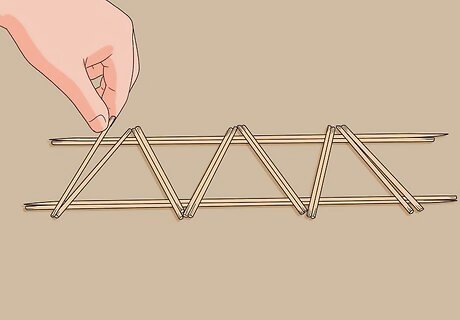
Build trusses first. Lay out the skewers for one truss (the support “wall” on either side of the bridge) flat on a table or other sturdy surface. You will need at least two skewers for the top and bottom “cords,” which are the horizontal pieces, and at least four for the diagonal “braces” that connect top and bottom cords. Form triangles with the brace pieces by placing them at alternating angles, with each point connecting to the top or bottom cord. The number and exact positioning you use will depend on your specific design. For this and other parts of your bridge design, you may want to glue or tie several skewers together for each section to strengthen it. You can hold skewers together with binder clips to strengthen the bind if you are using glue to attach them. Remember that you need to construct two trusses for your bridge. Once you’ve laid out the pieces for the first truss, do the same with another set of skewers for the other side of the bridge. If you are building a simple beam bridge, you will not need trusses and can skip this step.
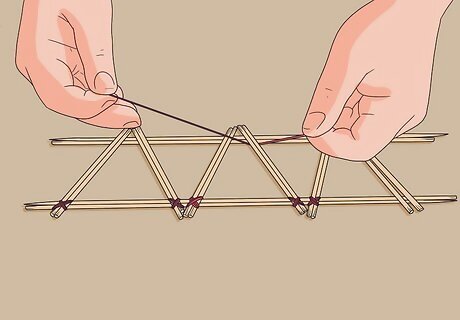
Glue or tie truss skewers together. Use glue or string to attach each skewer you’ve laid out for one truss. Apply glue or string at every point where one skewer or bunch of skewers meets another. Once you are done with all the pieces of one truss, glue or tie the pieces of the second truss. Leave the two trusses laying separate from each other and flat on the table for now. If you’re using glue, you may want to let it dry overnight or for several hours after application, especially if you plan to have your bridge hold weight. If you are building a simple beam bridge, you will not need trusses and can skip this step.
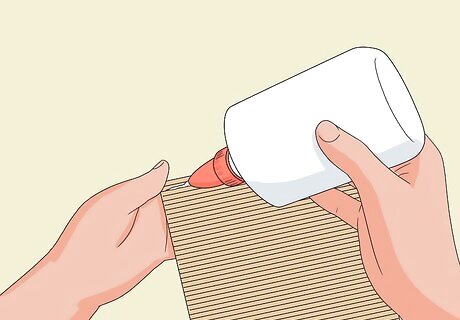
Construct the bridge deck. Build the deck where one would walk or drive a vehicle on a full-size bridge. Lay out at least two horizontal pieces as deck beams that will connect the two trusses together at the bottom of either end. It may help to add several deck beams that connect the two trusses to lend support. You can connect these at the same place where each brace attaches to the bottom cord. For now, simply lay them down between your two assembled trusses to prepare for assembly. Once you have at least two deck beams in place, you can fill in between the beams entirely with skewers to make one even, flat surface. Or, you can later make a more solid deck out of a piece of cardboard, wood, or other flat material if you like. If you’re using glue to connect pieces of the deck, allow it to dry for several hours or overnight, especially if you plan for the bridge to hold weight.
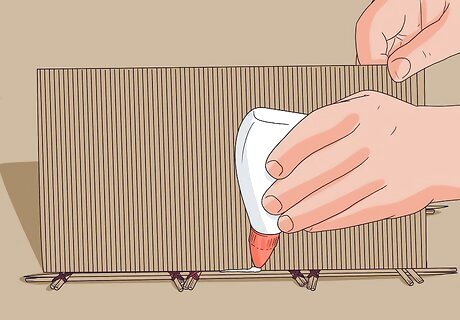
Assemble the trusses and deck. Gently tape or temporarily fasten each assembled truss to an object with a flat, vertical side (like boxes or books) to help keep the trusses upright and perpendicular to the table. Then glue or tie your deck skewers to the trusses before removing the boxes or books. For best results, wait till glue fully dries if you’re using it to connect your bridge structures. Then leave the completed structure to dry for several more hours or overnight. If your bridge design includes top beams, connect them across the two top cords of your trusses once you have connected them to the deck. Your design does not need top beams, but they may help hold the structure together with more stability.
Using or Displaying the Bridge
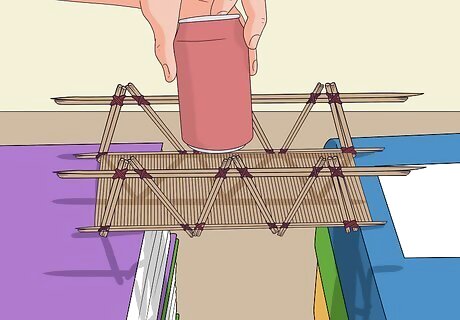
Use your bridge to test weight capacity. Try testing the weight that your bridge model will hold, either for fun or a competition. You can either place objects or weights directly on the bridge deck or suspended underneath it with a load bucket. Make sure the two ends of your bridge are balanced across two stable surfaces to test its ability to hold weight. If you want to use a load bucket to test weight, try attaching a film canister below your bridge with a piece of string and a paperclip. Then fill the canister with metal washers, coins, or other weights one by one until the bridge can no longer sustain the weight and breaks.
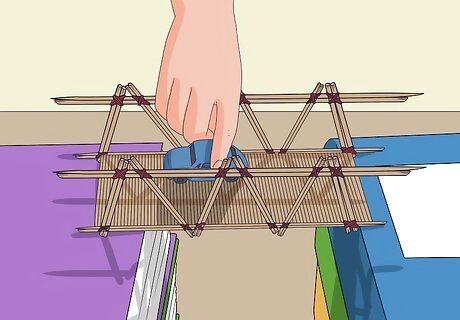
Make your bridge stable for use with small vehicles. Send small battery cars, trains, or other model vehicles across your bridge deck as part of a larger course or just for fun on its own. You may want to reinforce or make sure your bridge deck has a smooth, complete surface that your vehicle can drive up and over. Secure the bridge to whatever surface or surfaces you want to have it on so that it stays put for use with your model vehicles.
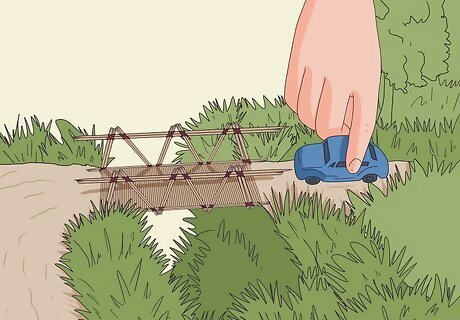
Display your bridge in a model display. Add your bridge to a larger model display or village in any way you wish. Try painting your bridge to match other pieces of your display or make it more authentic. Use paint with a small paintbrush or spray on spray paint to easily add colour to your model. Display figurines or model vehicles on the deck of your bridge by gluing them in place or simply setting them on the surface. You may want to design your bridge to fit the scale of other model structures or figurines ahead of time if you plan to display it this way. Add other decorative elements to your bridge if you wish with string, metal ornaments, wood, or other items to make your bridge more realistic, colourful, or fitting with any theme you have for your display.











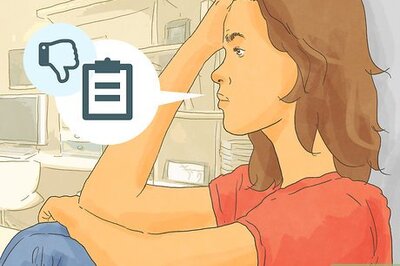
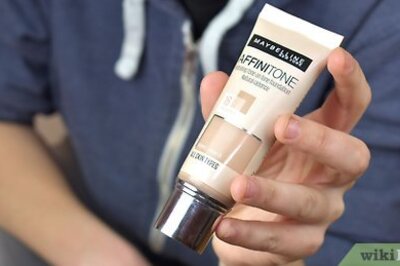
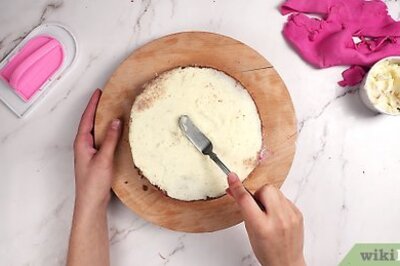
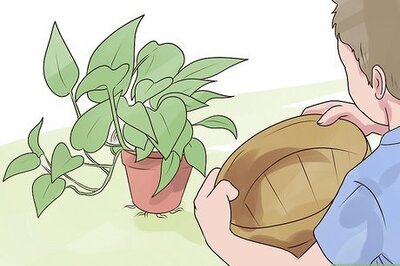

Comments
0 comment